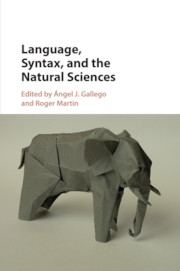Book contents
- Language, Syntax, and the Natural Sciences
- Language, Syntax, and the Natural Sciences
- Copyright page
- Dedication
- Contents
- Contributors
- Acknowledgments
- Introduction
- Part I The Computational Component
- Part II Interfaces
- 7 Linearizing Chains at LF
- 8 On the Rationality of Grammar
- 9 The Warped Forge
- 10 Limiting Semantic Types
- 11 Why Is Phonology Different? No Recursion
- 12 Nothing in Syntax Makes Sense Except in the Light of Change
- 13 Neurology and Experience: The Language Organ and Externalization
- Part III Linguistics and Other Sciences
- Index
- References
7 - Linearizing Chains at LF
from Part II - Interfaces
Published online by Cambridge University Press: 02 October 2018
- Language, Syntax, and the Natural Sciences
- Language, Syntax, and the Natural Sciences
- Copyright page
- Dedication
- Contents
- Contributors
- Acknowledgments
- Introduction
- Part I The Computational Component
- Part II Interfaces
- 7 Linearizing Chains at LF
- 8 On the Rationality of Grammar
- 9 The Warped Forge
- 10 Limiting Semantic Types
- 11 Why Is Phonology Different? No Recursion
- 12 Nothing in Syntax Makes Sense Except in the Light of Change
- 13 Neurology and Experience: The Language Organ and Externalization
- Part III Linguistics and Other Sciences
- Index
- References
Summary
Information
- Type
- Chapter
- Information
- Language, Syntax, and the Natural Sciences , pp. 139 - 163Publisher: Cambridge University PressPrint publication year: 2018
References
Accessibility standard: Unknown
Why this information is here
This section outlines the accessibility features of this content - including support for screen readers, full keyboard navigation and high-contrast display options. This may not be relevant for you.Accessibility Information
- 2
- Cited by
